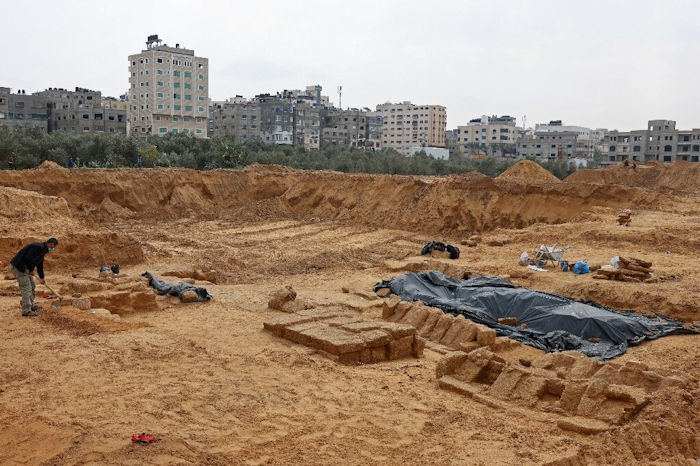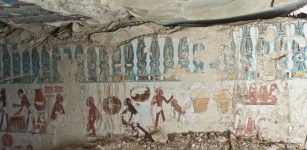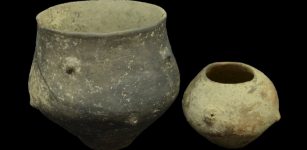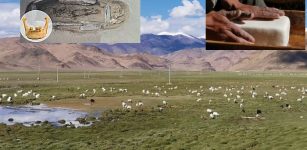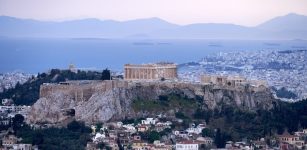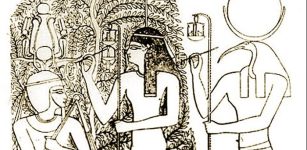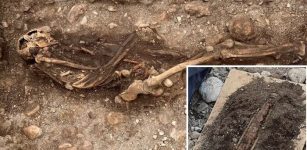Large Ancient Roman Necropolis Is Buried Beneath The Gaza Strip – Can It And Other Ancient Treasures Be Saved?
Jan Bartek - AncientPages.com - While workers labored on a large construction site in the Gaza Strip, a security guard noticed a strange piece of stone sticking out of the earth.
"I thought it was a tunnel," said Ahmad, the young guard and a Palestinian who preferred not to give his full name, referring to secret passages dug by the Islamist group Hamas to help it battle Israel.
Credit: AFP
However, investigations revealed Ahmad’s find was something of great historical value.
The story had its start earlier this year when construction workers unearthed 31 Roman-era tombs dating from the first century A.D. The tombs were discovered near the town of Beit Lahia as work began on an Egyptian-funded residential area,
At the time of the discovery Naji Sarhan, an official at Gaza's Ministry of Public Works, confirmed the find and said there is "evidence that there are other graves" at the site.
Looking through the eyes of archaeologists, the Gaza Strip is not an easy region to examine.
The find was the latest in Gaza, where tourism to archaeological sites is limited due to an Israeli blockade imposed since Hamas took over the strip in 2007.
Israel and Egypt, which shares a border with Gaza, tightly restrict the flow of people in and out of the impoverished strip, which is home to about 2.3 million Palestinians.
According to new reports, Ahmad’s find earlier this year is indeed part of a Roman necropolis dating from about 2,000 years ago, and there are more buried ancient treasures. under the Gaza strip.
“With rumors on social media of a big discovery, Gaza's antiquities service called in the French non-governmental group Premiere Urgence Internationale and the French Biblical and Archaeological School of Jerusalem to evaluate the site's importance and mark off the area.
"The first excavations permitted the identification of about 40 tombs dating from the ancient Roman period between the first and second centuries AD," said French archaeologist Rene Elter, who led the team dispatched to Jabaliya.
"The necropolis is larger than these 40 tombs and should have between 80 and 100," he said.
One of the burial sites found so far is decorated with multi-colored paintings representing crowns and garlands of bay leaves, as well as jars for funereal drinks, the archaeologist added.
'Treasures' Of Gaza
“Archaeology is a highly political subject in Israel and the Palestinian territories, and discoveries are used to justify the territorial claims of each people.
While the Jewish state has a number of archaeologists reporting on an impressive number of ancient treasures, the sector is largely neglected in Gaza.
Authorities periodically announce discoveries in the territory, but tourism at archaeological sites is limited, the AFP reports.
Media reports of archaeological discoveries from Egypt and Israel but there are many precious hidden ancient gems in Gaza too. Unfortunately, preserving ancient building is challenging due to the conflicts.
"However, there is no difference between what you can find in Gaza and on the other side of the barrier" in Israel, Elter said. "It's the same great history."
"In Gaza, a lot of sites have disappeared because of conflict and construction, but the territory is an immense archaeological site which needs many teams of experts," he added.
Stakes and fences have been erected around the Roman necropolis, which is watched over constantly by guards as new buildings go up nearby.
"We are trying to fight antiquities trafficking," said Jamal Abu Rida, director of the local archaeological service tasked with protecting the necropolis and which hopes to find investors for further excavation.
Since Hamas took control 15 years ago, Gaza has endured four wars and numerous escalations of tension.
A general view shows a newly discovered Roman cemetery containing ornately decorated graves, in Beit Lahia in the northern Gaza Strip. Credit: AFP
"The image of Gaza is often associated with violence, but its history is bursting with archaeological treasures that need to be protected for future generations," said Jihad Abu Hassan, director of the local Premiere Urgence mission.
Demographics add to the pressure.
Gaza is a tiny, overcrowded strip of land whose population in 15 years has ballooned from 1.4 million to 2.3 million. As a result, building construction has accelerated.
"Some people avoid telling authorities if there is an archaeological discovery on a construction site out of fear of not being compensated" for the resulting work stoppage, Abu Hassan said.
"We lose archaeological sites every day," which shows the need for a strategy to defend the enclave's heritage, including training local archaeologists, he said.
See also: More Archaeology News
Over the last few years, his organization has helped to educate 84 archaeological technicians. Doing so also offers employment prospects, in an impoverished territory where youth joblessness exceeds 60 percent.
Written by Jan Bartek - AncientPages.com Staff Writer


